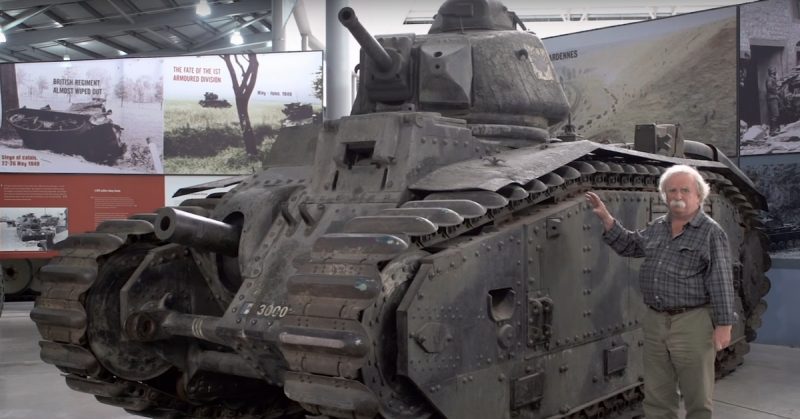The design of the Char B dates back to 1926 when three prototypes were built by a consortium of companies under the control of Atelier de Construction de Rueil. Subsequent developments saw the appearance of the Char B1 in 1935 and the Char B1 bis, an up-armored version, about a year later.
Although classed as a medium tank the Char B was clearly designed for infantry support. Its main armament, a 75mm howitzer, is located in the hull, alongside the driver who aims and fires it. The tank commander, in the turret, has to load and fire the 47mm gun and the 7.5mm machine-gun.
In its day the Char B was regarded as one of the most powerful tanks in the world, yet still had many features which harked back to the First World War; the tall hull, all-around tracks, and side entry doors, for example. On the mechanical side, however, it was extremely sophisticated.
The Renault six-cylinder engine had been modified from an aircraft unit while the transmission was operated by a hydrostatic system which gave the driver superb control when swinging the tank to aim the gun. The Char B was also equipped with an advanced gyroscopic direction indicator.
The Char B was issued to tank battalions in armored divisions and saw extensive combat in the summer of 1940. There is some evidence to suggest that visibility from the tank was poor and, undoubtedly, the crew of four was over-stretched.
Of the 365 tanks built, large numbers were captured intact by the Germans in France in 1940. Those tanks that survived were later incorporated into the German Army and modified in various ways. They were used to equip German armored units, serving as the PzKpfw Renault B-1 bis 740(f) and fighting in 1941 in Russia and the Balkans.
Our exhibit was issued to 1st Platoon, 1st Company, Panzer Abteilung 213, Panzer Division Schwetzingen for service in the Channel Islands and was captured on Jersey at the end of the war. The Panzer Abteilung 213 was formed in the autumn of 1941 to operate French tanks, and arrived in Jersey and Guernsey in March and April 1942 on the SS Derindje and SS Livadia. This tank was number 114. The regiment never fired a shot in anger, although many of its recruits fought in other panzer regiments. The tanks were returned to France in May 1946, although this one was sent to the School of Tank Technology in Britain before being moved to the Tank Museum.
A message from the Tank Museum:
“Please Support Us: As a charity, we rely on public support for all our activities. Our work is funded entirely by people like you. With your support, we can continue to create content. With the right support we might be able to do it more regularly – and can be even more ambitious. Please Click on the Banner Below”

